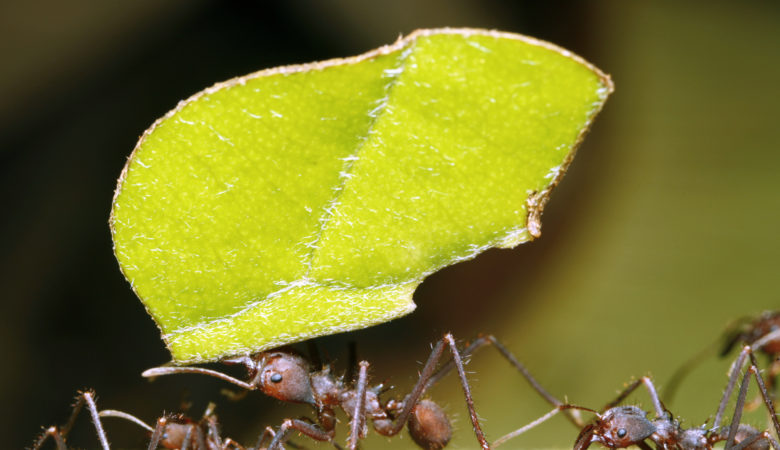Meet the Fungi with Mind Control Powers

It sounds like something out of a bad sci-fi flick: fungi with mind control powers. So far, their powers only extend to carpenter ants and houseflies…but the science behind fungal mind control is equal parts terrifying and fascinating.
Ophiocordyceps unilateralis is “the zombie-ant fungus,” which attacks carpenter ants. Entomophthora muscae infects house flies. Both fungi infect their hosts, then use those “mind control powers” to use the insects for their own goals. Since this is nature, the goal is almost always “reproduce”—and in either case, the results are delightfully disgusting.
Read on to meet your newest nightmare fuel.
The zombie-ant fungus
Ophiocordyceps unilateralis is found in tropical countries, deep inside the jungle. There, this fungus grows and uses carpenter ants to achieve its biological imperative.
According to the Atlantic, “When the fungus infects a carpenter ant, it grows through the insect’s body, draining it of nutrients and hijacking its mind. Over the course of a week, it compels the ant to leave the safety of its nest and ascend a nearby plant stem. It stops the ant at a height of 25 centimeters—a zone with precisely the right temperature and humidity for the fungus to grow.” Then the fungus forces the ant to lock its mandibles around a leaf—permanently.
Even worse? The fungus sends a long stalk through the ant’s head, which becomes a capsule full of spores. At that point, the spores fall down, usually over the colony’s foraging trails—the perfect opportunity to infect them, too.
If that sounds familiar, it’s because the “fungus’s skill at colonizing ants is surpassed only by its skill at colonizing popular culture. It’s the organism behind the monsters of the video game The Last of Us and the zombies of the book The Girl With All the Gifts.”
Truth is truly stranger—and more disgusting—than fiction. What’s worse is that the fungus manages to colonize the ant’s entire body. It doesn’t destroy the ant’s brain. It infiltrates every part of the body except the brain, letting the fungus commandeer the ant’s brain for its specific purpose.
A fungus that’s superfly
If that wasn’t terrifying enough for you, Entomophthora muscae might do the trick. LiveScience reports that the fungus works by infecting house flies. Then it starts “manipulating their behavior, compelling the flies to climb to an elevated surface, like a tall plant stem or twig. The zombie flies then cling and die there with their wings outstretched, in order to better disperse the fungal spores that sprouted from their bodies.”
Here’s where it gets worse. When the female zombie flies die, they emit a pheromone that smells similar to the one indicating a female is ready to mate. “That sexy scent is thought to be extremely potent, because it attracts healthy males and prompts them to mount the dead females; the males in turn become infected and fly off to spread the fungal spores among their friends and neighbors.” (And here you thought online dating was a horror show.)
Scientists have been studying what it is about Entomophthora muscae that makes it so alluring to male flies. What attracts them to mate with dead female flies, at risk to their own health? They found that “[w]hen the researchers tempted male flies with an assortment of female cadavers — some that were infected with the fungus and some that weren’t — they found that the males more often tried to mate with infected corpses, suggesting that something related to the fungus made these particular cadavers more alluring.”
Ants, flies and parasitic fungi, oh my
These are just a couple examples of parasitic fungi with “mind control” powers. As we all learned in Jurassic Park, “life, uh, finds a way”—sometimes truly horrifying, gross ways. There are also fungi that turn cicadas into “sex-crazed zombies” and flatworms that infiltrate fish brains. (Perhaps these examples are where J.K. Rowling got the inspiration for the Imperius curse.)
Should we be worried? Probably not—at least not about the examples above. On the other hand, there are plenty of parasites that infect the human brain, too, and some of them are a lot closer to home. Next time you’re changing Fluffy’s kitty litter, keep in mind that you might be subjecting yourself to feline mind control parasites.
Ultimately, these fungi and parasites are examples of the lengths nature will go to in order to reproduce. We can all be grateful that we (probably) don’t need to worry about mind-control fungi sending stalks through our own heads—sorry, carpenter ants.

